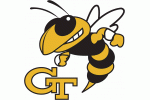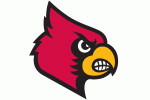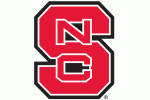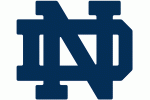Some teams reload. You know who I’m talking about, Duke, North Carolina, Syracuse. Other teams have a head coach who delivers NBA talent, keeps them planted near the top of the conference, but since he disappoints in the NCAA Tournament, they fire him and hire a guy who for some reason always seems to have that same dumbfounded look on his face that says, “what’s a basketball?
Teams like that need to rebuild from scratch…one such team is Wake Forest.
The key to this type of turnaround is patience from the fan base, because the first thing a new coach has to do is bring in “his” players. We’re already seeing it paying off at a school like Virginia and I suspect we’ll soon see it from Boston College and Georgia Tech.
For Jeff Bzdelik though, he’s already had three seasons under his belt and the problem is, his teams don’t seem to be improving.
What’s gone wrong?
You could argue that he started with very little since the Demon Deacons lost five of their top seven players prior to his arrival: L.D. Williams and Chas McFarland to graduation, Tony Wood to dismissal and Al-Farouq Aminu and Ishmael Smith to the NBA draft. On top of that, Ari Stewart would transfer out the following season.
Yet, Bzdelik made a good impression off the bat when he was able to keep former coach Dino Gaudio’s solid five-man 2010 class, the one that featured four players who were top-20 at their respective positions, from backing out of their commitments.
However, between that class and next year’s trio of recruitts, six of those eight players have already jumped ship. Ouch.
This left a ton of scholarships open, so Bzdelik brought in seven new faces in the 2012 class.
They were Codi Miller-McIntyre (#14 PG), Arnaud Moto (#30 PF), Aaron Rountree III (#46 SF), Devin Thomas (#36 PF), Tyler Cavanaugh (#38 PF), Madison Jones (#34 PG), Andre Washington (#46 C).
The Wake Forest coaching staff didn’t waste any time and threw most of the rookies into the fire. Both Miller-McIntyre and Thomas started pretty much the whole season, while Moto ended the season as the starter. Cavanaugh and Jones were key reserves off the bench, while Rountree was a solid role player. Only center Washington struggled to find time on the court, but that’s typical of big guys since they take longer to develop.
The Demon Deacons finished 13-18 for the second straight year. Their 6-12 conference record was good enough for 10th place.
With so many freshmen contributing, it’s no wonder this team struggled, that’s why they’re called growing pains. However, the Demon Deacon faithful are getting impatient. This is a fan base that has seen the likes of Tim Duncan, Christ Paul and Jeff Teague (to name a few) pass through the doors and deliver wins. They’re sick of growing and are calling for Bzdelik’s head.
How these freshmen improve will determine if Bzdelik will survive after the 2013 season.
First, the fact that none of these seven recruits abandoned the program after just one season is a good sign. Eventually one or two will transfer out, simple because there isn’t enough starting spots for all of them, but since they all came back for season two, that’s a good sign.
Second, the reality is they should get better. There is always a freshman-to-sophomore improvement…it’s like the light bulb comes on and the game starts to speed up. There is still plenty of development that needs to take place, plenty of skills still to learn, but eliminating the freshman mistakes can certainly add some wins to a team’s standing.
Of course a good way to see how freshmen will improve is to see how they performed at the end of their rookie year. It’s about finding the little nuggets that should give fans hope that their second year will be better than their first.
Devin Thomas is a prime example of this. While he started all season long, Thomas’ offensive game didn’t really click until the Boston College game on January 12. In fact, if you use Ken Pom’s offensive efficiency ratings, prior to the BC game, Thomas wasn’t very good at all. He averaged 5.8 points per game, hitting just 37% of his of his shots. He did grab a decent 6.6 rebounds per game, but his overall offensive efficiency rating was just 79.8.
However, starting with that Boston College game, things started to click for Thomas. From that point on, he averaged a solid 11.8 points and 8.3 boards. Most importantly though, his shooting percentage jumped to 56% from the field. His offensive efficiency rating in Wake Forest’s final 17 games was 102.2…that’s a 22.4 point improvement.
For Arnaud Williams Adala Moto, it took a little longer. He had his best game against North Carolina on February 5. From that point on, his offensive efficiency jumped from 79.8 to 92.2. His scoring average only went up 1.54 more points per game, but he went from shooting 32% from the floor to 48% from the floor.
Heading into the season, Codi Miller-McIntyre had the highest expectations and the toughest job, running the point. While I would have liked to see Miller-McIntyre’s assists total go up (they stayed the same the entire season), for a team that produced 93 more turnovers than assists, he actually finished +19 on the season. Of all returning players in the ACC, he’s 10th in assist-turnover ratio.
However, one key element of development is learning what you’re good at and Miller-McIntyre is better at working the ball into the paint. In his final 14 games, his shooting percentage from two-point range jumped from 35% to 47%.
Tyler Cavanaugh was actually Wake Forest’s fourth most efficient player, but he struggled on the defensive side of the ball and couldn’t stop committing fouls. Slowly his points and rebound totals dropped as the season went on. However, he did get better about not committing fouls. In the season’s first 16 games, he averaged 2.63 fouls per game, getting three or more fouls 10 times. In his final 16 games, he got three fouls in a game just five times, averaging 2.0 per game.
For a guard, Madison Jones is a terrible outside shooter (0-7 from three as a freshman), so he better be a distributor. In Wake Forest’s first 20 games, he averaged only 1.74 assists per game. However, in his final 12 contests, his assists average jumped to 2.75.
Both Aaron Roundtree III and Andre Washington struggled to earn playing time down the stretch, so they didn’t really show any improvement in the second half.
Those are your nuggets of good news. Now heading into 2013 season, there is plenty of work to be done.
DEFENSE: This team gave up over 70 points per game last year, second worst in the ACC. Their opponents’ .455 shooting percentage was the conferences worst. Considering defense is usually the toughest thing for rookies to grasp, I expect a solid improvement next year.
REBOUNDING: They were -2.4 rebounds last year, 11th in the ACC. Hopefully an improved Andre Washington can provide some boards off the bench.
ASSISTS-TO-TURNOVERS: As a team they had just 352 assists to 445 turnovers. That ratio was second worst in the ACC.
THREE-POINT SHOOTING: As a team, they shot 34% from three, but most of the made three-point shots were done by upperclassmen (most who won’t be back in 2013). The 2012 freshmen hit just 26% from deep (42-164). That needs to go way up.

















